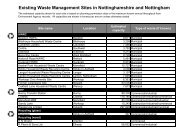Nottinghamshire Common Assessment Framework Handbook
Nottinghamshire Common Assessment Framework Handbook
Nottinghamshire Common Assessment Framework Handbook
You also want an ePaper? Increase the reach of your titles
YUMPU automatically turns print PDFs into web optimized ePapers that Google loves.
You can find out more about consent and information sharing in these documents:<br />
n The <strong>Nottinghamshire</strong> <strong>Common</strong> <strong>Assessment</strong> <strong>Handbook</strong> available online at:<br />
www.nottinghamshire.gov.uk/commonassessmentframework<br />
n Information sharing: Guidance for Practitioners and Managers (2008)<br />
n Information Sharing: Case Examples (DFES, 2006), all available online at:<br />
n www.everychildmatters.gov.uk/deliveringservices/informationsharing<br />
3) Use your professional knowledge and experience to decide how to complete the CAF<br />
The CAF provides you with a structured way of recording information about a child or<br />
young person and his/her family. You should use your professional judgement to decide<br />
what strengths and needs to record in each section of the assessment. In the document<br />
listed below, you will find some ideas about when to complete a CAF and what you might<br />
record in each section. These are not checklists and are not a substitute for professional<br />
judgement – you and the family are the people who are best placed to decide when to<br />
use the CAF and what you need to record within the CAF.<br />
1.7<br />
Using the CAF in <strong>Nottinghamshire</strong>:<br />
CAF Process Summary<br />
The first practitioner who identifies that a CAF is needed is responsible for ensuring that a<br />
CAF is completed. This person either completes the CAF or arranges for someone else to<br />
do so.<br />
The CAF process can be summarised in three stages:<br />
1. Preparation<br />
2. Discussion 3. Delivery<br />
Seek the consent<br />
of the child/young<br />
person or parent/<br />
carer<br />
Check if a CAF<br />
already exists<br />
Talk to other<br />
workers if you need<br />
more information<br />
Complete CAF<br />
assessment<br />
together with child/<br />
young person and<br />
or parent/carer<br />
Use CAF form to<br />
record strengths,<br />
needs and goals<br />
and agreed action<br />
Deliver agreed<br />
actions in a<br />
coordinated way<br />
(This may mean<br />
setting up a multiagency<br />
family<br />
support group to<br />
meet regularly)<br />
Monitor and review<br />
progress<br />
The standard CAF process assumes that the family prefers to talk with one practitioner.<br />
This practitioner will act on behalf of the family to contact other practitioners and seek<br />
their views. She or he will then discuss this information with the family and complete the<br />
CAF assessment. You may find that you need to vary this process sometimes to meet the<br />
unique needs of a family.<br />
You may complete the CAF in any way and in any place that suits you and the family<br />
provided you ensure that you always:<br />
n work in a strength-based way<br />
n work with the family at all stages and seek consent where appropriate<br />
n inform the Integrated Services Team about all work that you do.<br />
4



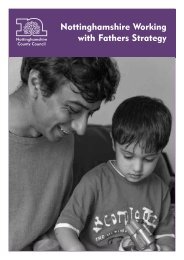
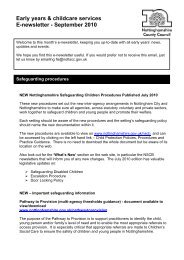
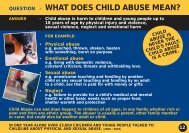

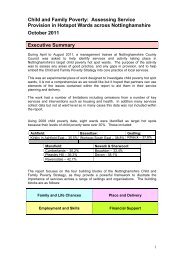

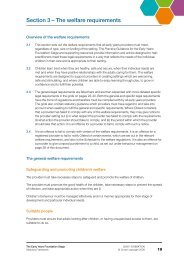
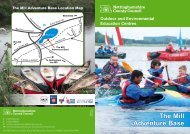


![Every Parent Matters [PDF 463KB] - Nottinghamshire County Council](https://img.yumpu.com/47250686/1/184x260/every-parent-matters-pdf-463kb-nottinghamshire-county-council.jpg?quality=85)


![School Employee Domestic Violence and Abuse Policy [PDF 228KB]](https://img.yumpu.com/46294446/1/184x260/school-employee-domestic-violence-and-abuse-policy-pdf-228kb.jpg?quality=85)
